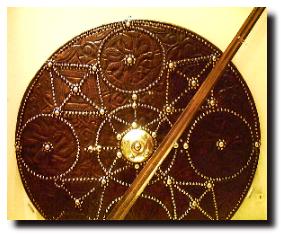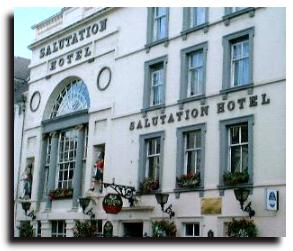Jacobite Uprising, 1745

Despite the setback, Charles was resolved to sail to Scotland. For most of his life he would have been told exaggerated stories about the level of support and must have believed that his arrival would result in a massive, spontaneous uprising. He only sent a letter to his father about his intentions as he was ready to depart. On 23 July 1745, Charles landed on the white sands of the Outer Hebridean island of Eriskay, accompanied only by a small band of companions known as the "Seven Men of Moidart". The Prince is said to have scattered some seeds there and to this day a flower known as the Prince's Flower grows there and nowhere else in Scotland.
Initially, the Highland chiefs were reluctant to join him, particularly as he had no French army with him. The first to announce he would follow Charles was Ranald MacDonald and others soon followed. The Prince's standard was raised at Glenfinnan at the head of Loch Shiel on 19th August. At first there was no sign of any gathering clans but late in the afternoon the Camerons of Lochiel arrived followed by MacDonalds and MacGregors. Eventually some 1,500 men assembled. Many chiefs were reluctant to join him, but his enthusiasm and charm persuaded many who heard him. It is likely that the news that the Campbells were gathering a unit to assist the government forces, may have induced some clans with scores to settle to join the Jacobite cause.
 The Highland army marched across Scotland, growing in size as it went. They reached Perth early in September and the Prince stayed at the Salutation Hotel there, which still functions as such today. The room where he slept is still used as a bedroom. Prince Charles rode into the city in full Highland dress, a direct descendant of Robert the Bruce. In Perth he was joined by Lord George Murray who was an able soldier and he was appointed lieutenant general of the Jacobite army. While in Perth, Charles is said to have visited Scone, the place where so many of his ancestors had been crowned.
The Highland army marched across Scotland, growing in size as it went. They reached Perth early in September and the Prince stayed at the Salutation Hotel there, which still functions as such today. The room where he slept is still used as a bedroom. Prince Charles rode into the city in full Highland dress, a direct descendant of Robert the Bruce. In Perth he was joined by Lord George Murray who was an able soldier and he was appointed lieutenant general of the Jacobite army. While in Perth, Charles is said to have visited Scone, the place where so many of his ancestors had been crowned.
Advance and Retreat
The Jacobite army entered Edinburgh on 17 September and Charles took up residence in the Palace of Holyroodhouse. Up until this time, apart from a few skirmishes, the Hanoverian army had avoided any major conflict. But they were encamped at Prestonpans, to the east of Edinburgh under the command of Sir John Cope, waiting for reinforcements from the south. On September 21, Lord George Murray led the Jacobites in a circle to the south and took the redcoats by surprise by attacking at dawn from the rear. The Battle of Prestonpans lasted only 15 minutes and gave the Jacobites a psychological boost.
After five weeks of inactivity in Edinburgh, Prince Charles crossed the English border with 5,500 men and advanced through England. By 4 December they had reached as far as Derby in the heart of England, 120 miles from London. But bad winter weather was taking its toll and there was no swelling of the ranks from the people of England. Faced by a Hanoverian army of 12,000 and another army of redcoats coming south behind them, the Prince's advisers recommended retreat. What they did not know was that London was in panic and King George had his valuables packed on a boat on the river Thames. Charles argued against retreat but eventually had to accept.
William, Duke of Cumberland, son of King George I, in command of the Hanoverian army was in pursuit but the Jacobites mainly kept ahead of him and reached Glasgow by Christmas Day. While in Glasgow, Prince Charles met 20-year-old Clementina Wilkinshaw who was later to become his mistress.
On 17th January, the Jacobite and Hanoverian armies met near Falkirk. Thanks once again to the tactics of Lord George Murray, the Highlanders inflicted heavy casualties on the redcoats who left the field of battle in confusion, only failing light stopping a rout. In the entire campaign from Glenfinnan to Falkirk the Jacobite army had never been defeated.



